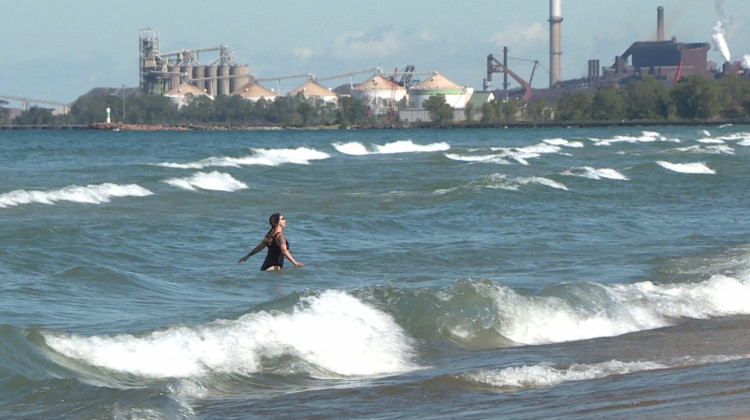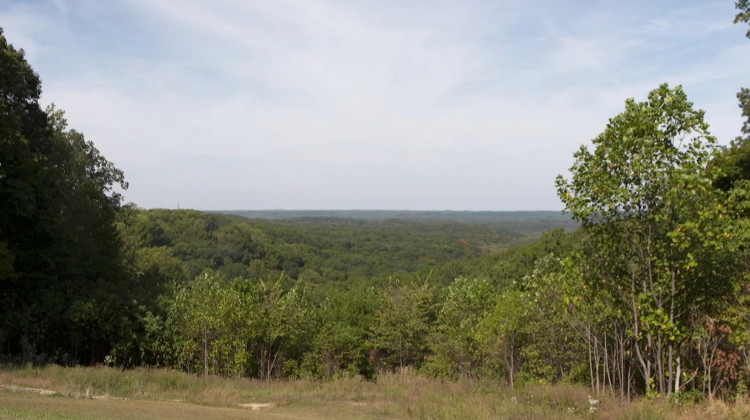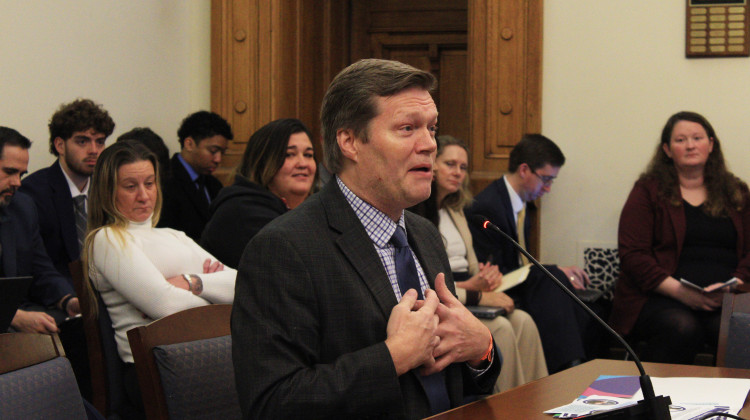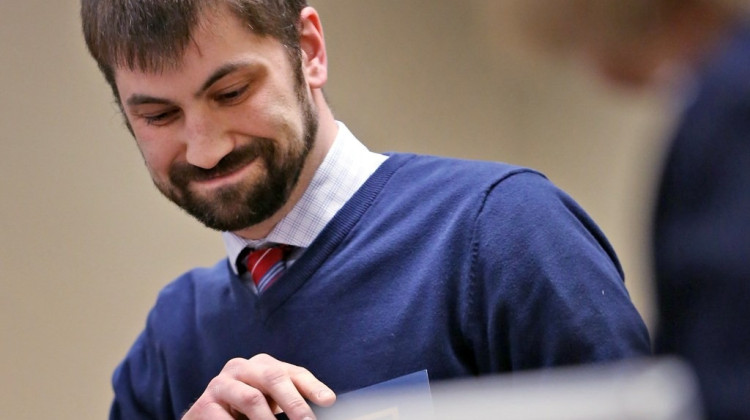PORTER, Ind. (AP) — For Deborah Armstrong, knowing that blue water fills the background of the the Indiana Dunes National Park brochure, is useless. Armstrong, who is blind, helped Indiana Dunes develop a new audio-described brochure, pushing the park to paint a vivid picture of the park.
“We don’t need to focus on exactly what we see, we need to focus on describing what we see,” said Steve Rossi, a park ranger who was instrumental in developing the park’s audio brochure. “I was shaking in my boots terrified. How do you describe a map and not get somebody lost? Now that it’s all said and done, I’m not too scared anymore. I just learned to slow down.”
In August, the audio description company UniDescription approached the park about creating the audio brochure. Visitors can access the brochure on the UniDescription app and listen to the hour-and-14-minute-long recording. Listeners using a screen reader can even customize the reader’s voice.
UniDescription, a research initiative working to translate visual media into audio media, has been working with national parks across the country to make informational materials more accessible.
Steve Rodriguez, an Indiana Dunes park ranger who is legally blind, and the park’s Visual Information Specialist Wesley Butler, were also heavily involved in the project. From Oct. 26 to 28 the team competed against parks located across the globe in a virtual Descriptathon. Teams spent three days creating audio descriptions, receiving feedback from a panel of blind judges and from fellow competitors.
Working alongside a ranger who has limited vision sheds light on what struggles visitors with visual impairments may face, Rossi said. Even Rodriguez, who traverses the park daily and knows the trails “like the back of his hand” still occasionally needs guidance.
“It’s an awesome feeling. We’ve not only given somebody equal and equitable access to the park, we’ve also given them agency,” Rossi said. “Now somebody with limited or no vision can listen to the brochure and find their way around the park without having to feel obligated to have somebody by their side.”
Rossi likes to envision park visitors as silhouettes, “I don’t care who you are, I just want to see you out there enjoying the park. It’s your park.”
Inaccessibility has long shaped who can enjoy the outdoors. A 2004 study from the Journal of Parks and Recreation Administration, found respondents without disabilities were 16.6% more likely to say they spend time outdoors than those with disabilities. Thirty percent of respondents with disabilities cited “inadequate facilities” as a barrier to outdoor recreation, compared to just 15.9% of those without.
Over the past two to three years, Indiana Dunes has been working to make the park more accessible, providing a variety of bicycles and wheelchairs that navigate the park’s changing terrain, including beach chairs that allow access to the dunes. In 2019, Rossi led a field trip where a boy utilized one of the park’s off-trail wheelchairs to access the fur trader cabin.
“He would not have had a field trip if there was no wheelchair,” Rossi said. “That sold it (increasing park accessibility) for me because I saw that little boy and the smile on his face.”
While much of the park’s focus had been on physical accessibility, last year Butler redid the park movie, adding audio descriptions. Starting in June, Butler and Rossi have been adding audio recordings to the park’s many wayside exhibits and informational signage. Visitors can dial a phone number to hear a recording of Rossi reading the signage. So far 10 of the approximately 100 waysides have been completed.
When the park was approached by UniDescription, Butler and Rossi thought the project was a great way to expand the work they had already started.
First developed in 1967, the park brochure has shape-shifted over the years, with the most recent update occurring in 2019 after Indiana Dunes became a National Park.
Rossi spent the last five summers staring at the front of the brochure — upside down. From his usual perch at the Indiana Dunes visitor center, Rossi spends much of his day showing hikers the brochure’s map. Before starting the audio project Rossi said he wasn’t sure if he had “ever even looked at the back of the brochure.”
Adorned with vibrant photos of the park’s many habitats, graphics showing the impact of the glaciers and sepia-toned images of the park’s early days, the brochure is packed with information. The team broke the brochure into 34 sections, spanning the history of the park to its many unique biological features.
Each recording includes a synopsis, which Butler said is the “first glance of what you see” and an in-depth description. The in-depth description is what happens “when you look at the photo for more than 10 seconds. Then the details really start coming out,” Rossi said.
“It has changed my perspective, now I really appreciate what the park is all about,” Butler said. “Listening to it you go, ‘Wow, there is so much more going on,’ ... even if you are not blind it is a great tool to have.”
Park rangers supplied painstaking detail for each image: the precise number of yellow perch, the exact type of goldfinch. Rossi hopes visitors of all ability levels will listen to the brochure on their way to the park as a way to familiarize themselves with the sometimes hard-to-navigate area, treating the brochure “no different than an audio book.”
Rossi plans on incorporating the lessons learned throughout the audio brochure project into his other park responsibilities. When leading tours, Rossi said he will “take into consideration that people’s eyes might not be what my eyes are.”
“It’s OK to use an extra word or two ... you’re just providing somebody a little bit of extra knowledge,” Rossi said. “None of it is wasted breath.”
 DONATE
DONATE







 Support WFYI. We can't do it without you.
Support WFYI. We can't do it without you.